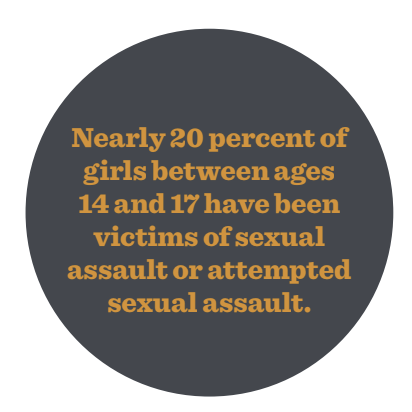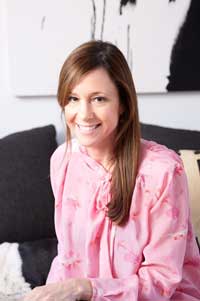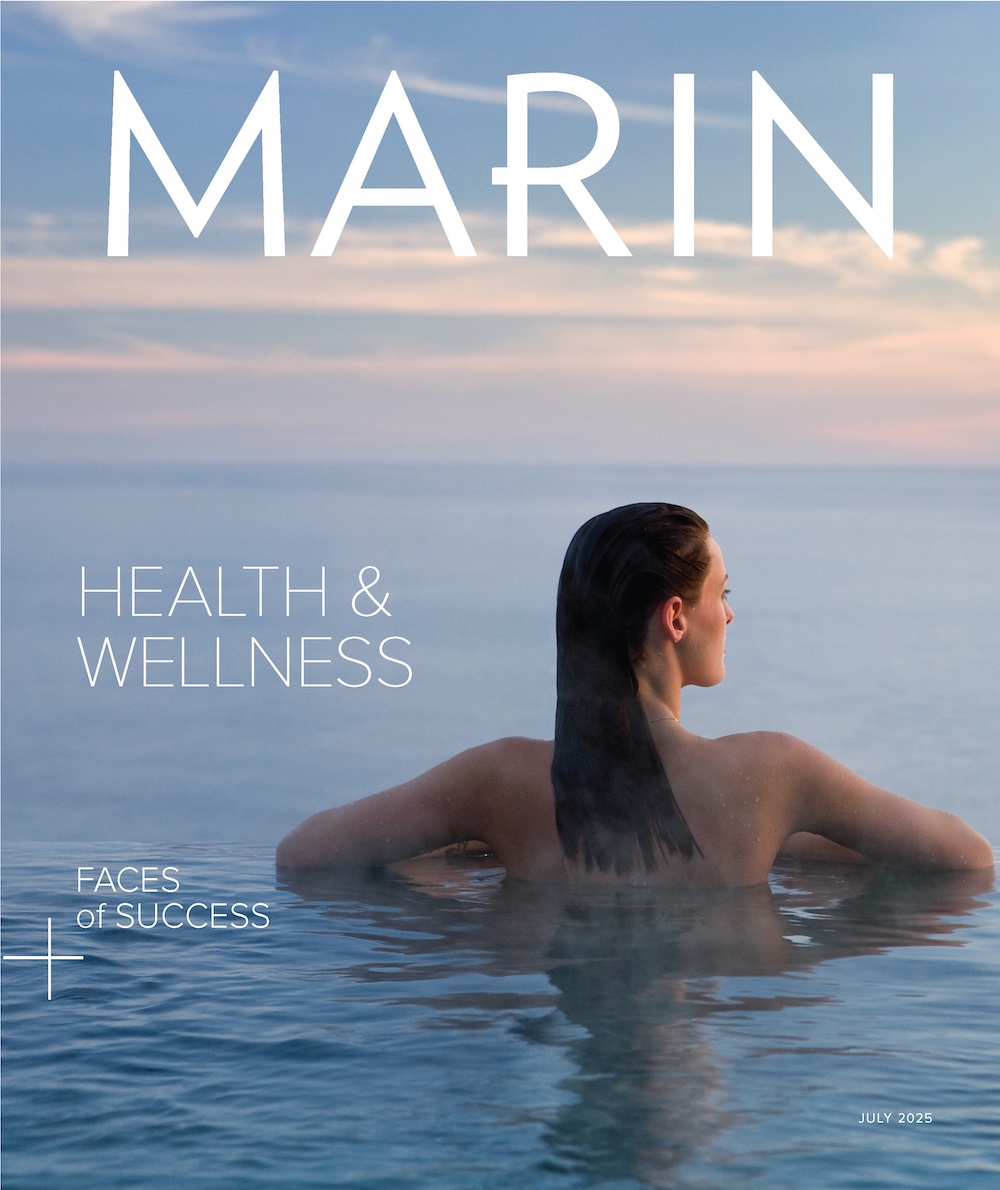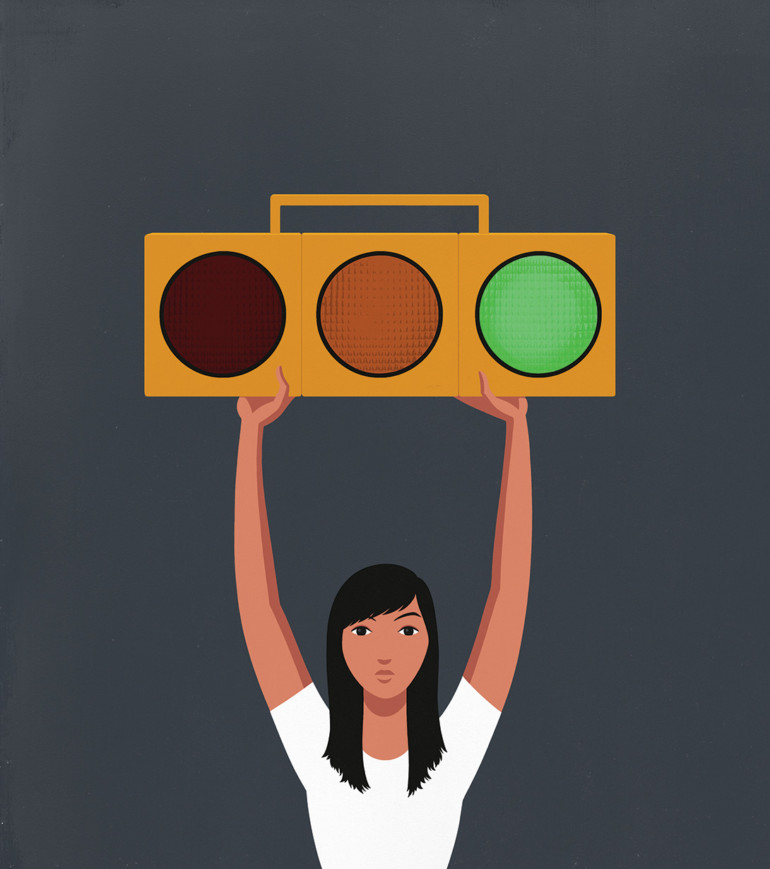FLIRTING CAN BE FUN, but for today’s teens, it can get messy; it can even be illegal. One not-so-well-thought-out moment can have serious future impact on a young person’s life. Television shows, like the popular HBO Series Euphoria, are chronicling the complexity of navigating teenage sexual dynamics. Gone are the days of a simple note passed in the classroom — kids are now in the world of the naked selfie. Even a decade ago, the effort involved in sharing such photos would have stopped most. Today, it’s easy. And that’s just one of the complicated new realities for teens in the era of #Metoo. Students and teachers alike are finding themselves in a quagmire of rules, assumptions and expectations.
It may be too soon to know the true impact of #MeToo over time, but one thing is for sure: it has pushed the conversation on sexual assault and harassment to the forefront. Started by Bronx civil rights activist Tarana Burke over a decade ago, the movement became an internet phenomenon in 2017, when actress Alyssa Milano invited women to share their stories of assault on Twitter by using the hashtag #metoo. Since then, #MeToo has become the battle cry for victims globally, making its way from Hollywood to the workplace, politics, religious institutions — and now schools.
One of the more public local examples of this inroad occurred at The Branson School in Ross, which ordered an independent investigation in May 2018 that ultimately found that four faculty members — three coaches and one college counselor — were guilty of sexual misconduct that dated as far back as the 1970s. Faced with these revelations, “we wanted to send a strong message to students that [people] must take responsibility for their actions,” says Chris Mazzola, Branson’s Head of School. Since the investigation, Branson has clarified its policies of reporting abuse, increased weekly student consent workshops on campus, and expanded elective courses, including “Body Positive,” “Navigating Consent,” “Social Media Literacy” — all aimed at preventing further abuse. 
Additional reports of misconduct have surfaced in Marin in the past two years, including those against a former Tamalpais High tennis coach, who, last month, was sentenced to 255 years for the molestation of teenage boys. Students are not the only ones who have reported sexual harassment and assault; the #MeToo movement has emboldened teachers to speak up about harassment they’ve suffered. In February 2018, reports emerged of a female teacher at Tamalpais High School accusing male students of harassment. The same year, a teacher at Redwood High School came forward with similar accusations.
Sexual assault prevention on college campuses, including state-mandated education and support services, is standard today. High schools, however, have been slower to adopt policies, even though studies show that high school–age students are as much, if not more, at risk. The U.S. Department of Justice states that nearly 20 percent of girls ages 14 to 17 have been victims of sexual assault or attempted sexual assault. Harassment is an even bigger problem statistically: according to the latest tally from a 2011 study by the American Association of University Women, 48 percent of students in grades 7–12 reported experiencing some sort of sexual harassment during the school year.
Even with the #MeToo movement, sexual abuse continues to be the most underreported crime in the country, according to the Rape, Abuse, and Incest National Network (RAINN). So how can faculty ensure that schools are safe and nurturing places for all students and staff? Better reporting policies is a start, but experts say a fundamental, full-scale change in sexual norms between girls and boys is necessary. Jessica Colvin, wellness director at Tamalpais Union High School District (which includes Tam, Redwood, Drake, San Andreas and Tamiscal), has been tasked with that very mission. She has created comprehensive harassment- and abuse-related instruction that’s now a mandatory part of the curriculum in her district; it includes workshops, activities and youth radio on topics ranging from consent to domestic violence to refusal tactics. “Students tell me that they can relate more to the material when it’s drawn from the #MeToo movement,” says Colvin, who adds that as of 2019, on-site Wellness Centers (which offer coordinated substance abuse and sexual health services) opened at Redwood, Drake and Tamalpais high schools.
Two California affirmative consent education laws (SB 695 and SB 967) that went into effect in 2016 are at the centerpiece of Colvin’s curriculum. But while affirmative consent is mandatory on California college campuses and includes the requirement that there be “affirmative, conscious, voluntary agreement to engage in sexual activity at every stage,” it currently remains only a recommendation at the high school level. Some of the laws’ teaching points: “Consent is between two people.” “Silence is not a yes.” “What does an affirmative response look like on your face?” and “Can you consent when influenced by a partner with blame, pressure or guilt?”
While sexual assault is a clear felony offense, sexual harassment falls into more of a gray area, making it even more challenging to prevent. Colvin uses the legal definition of harassment in her classes: any unwelcome, unwanted pressure; verbal, visual or physical contact of a sexual nature; any repeated or deliberate action or behavior that is hostile, offensive or degrading to the recipient.
Are these efforts shifting teens’ attitudes and behavior? For the most part it seems the answer is yes, although responses still vary across districts and schools. For her part, Colvin is encouraged by the changes she sees, though she says there’s still a long way to go. “We see girls feeling more emboldened to tell a community member about misconduct,” she says. Students at Drake called “Glow- Standards” wear glow sticks to indicate they can be flagged down for help if misconduct occurs at school dances.
One recent Drake graduate said consent education started for him in middle school (White Hill Elementary) and that he and his friends are pretty clear on how to navigate communication with girls. “On my first date (in sixth grade), I knew I had to ask permission first to kiss the girl — and get a ‘yes’ [before doing so],” he says. His mother added that she thinks that girls actually drive the physical relationships at this age.
Tara Taupier, superintendent of Tamalpais Union High School District, says she’s observing a change in norms too. At both Redwood and Tamalpais high schools, she says, behavior in athletic programs is “culture-shifting,” and the coaches set very strict rules about the type of language allowed on and off the field. She recalled a recent episode when an assistant coach used derogatory language during practice and a player told him to knock it off. “It’s one thing when parents, teachers and law enforcement stigmatize behavior, but when it becomes uncool to talk disparagingly about girls amongst peers, it’s much more effective.”
Some teachers in the district are incorporating #MeToo themes into instruction on their own. This April, Andrew Simmons, a journalism and English teacher at San Rafael High School, invited Emma Brown, the Washington Post reporter who broke the story of Christine Blasey Ford accusing Supreme Court nominee Brett Kavanaugh of sexual assault, to speak to his class. Simmons, who is authoring a forthcoming book on lessons about relationships that literature can teach kids, also uses classics like The Odyssey and Of Mice and Men to lead in-class discussions on topics like consent, harassment, masculinity and friendship. “Odysseus was a hyper-violent man and a dedicated womanizer,” Simmons says. “When students think about his behavior through that lens, the book becomes more than a lesson on Greek mythology.”
Some instruction is happening earlier. David Finnane, principal at Bayside MLK (K-8) in Marin City and a father of two teenage boys, says his school starts teaching about general wellness, mindfulness and nutrition in kindergarten and sexual health education in the sixth grade.
Community support for #MeToo is grow- ing as well. Established in 2000, the Jeannette Prandi Children’s Center in San Rafael aids children in the interview process when sexual abuse has occurred and also offers workshops and educational materials to Marin County schools. In 2011, the head of the center, Michael Grogan, produced a film called Irreversible Consequences, which depicts two high school students (a girl and a boy) who start texting in an encounter that leads to rape. The film, seen by over 12,000 students across Marin, is followed by an audience poll, and some of the findings are sobering: for instance, 48 percent of ninth-grade girls believe sexting is an expected part of dating. Grogan believes #MeToo has shined a spotlight on sexual assault, but also that the entertainment industry and social media haven’t caught up with the culture and thus have slowed the pace of progress.
Not everyone sees #MeToo a s a social advancement. Marin Catholic teaches abstinence – only, although, according to one 16-year-old at the school, that doesn’t prevent kids from engaging in sexual activity, and she would welcome discussions about consent. Asked for comment, the school administration responded by email that “considering our Catholic mission, [we] don’t think it is appropriate for us to get involved [in this article].”
Some parents feel #MeToo has gone off the rails. According to a mother of two boys enrolled at a private high school in San Rafael, it’s actually made gender relations more strained. One son, a lacrosse player, tells her that boys, in particular those who play team sports, walk around with targets on their backs. “There are assumptions that athletes are part of or leading rape culture,” the mother says. A father in Mill Valley says he worries for his three boys, a fifth-grader and two high schoolers: “A girl can come back years after a consensual exchange and claim she was an unwilling participant,” he reflects. “One easy mistake now can cost a kid his whole school career.”
Another father, whose daughter just graduated from Redwood High School, points to a need for a careful balance. “I support wellness education,” he says. “But the #MeToo movement is in its infancy, and the challenge is not only to support victims, but also to ensure that innocent kids are safeguarded. Consent is a complicated topic. It cannot be reduced to a 30-second sound bite debate topic.”
Whether we’re ready or not, the #MeToo movement is here and underway. It’s part and parcel of a new era in relationships, with topics like sexual indiscretions and abuses of power now discussed on the nightly news. In Marin, one of the country ’s most forward-looking regions, most schools are heeding the call, laying the groundwork for more equitable relationships with a proactive approach.
LOCAL RESOURCES
TAM WELLNESS CENTER
415.945.1000
DRAKE WELLNESS CENTER
415.453.8770
REDWOOD WELLNESS CENTER
415.924.6200
THE CENTER FOR DOMESTIC PEACE
A Marin-based organization seeking to end domestic violence. CFDP offers services and programs that protect and enhance victim safety. 415.924.6616
COMMUNITY VIOLENCE SOLUTIONS
An umbrella organization for the Rape Crisis Center of Contra Costa and Marin counties, CVS provides support services to child and adult victims of sexual assault and their families. 800.670.7273
JANNETTE PRANDI CHILDREN’S CENTER
A child-friendly center with specially trained team members who conduct forensic interviews in a case where sexual violence has occurred. 415.499.3750
MARIN COUNTY SHERIFF’S OFFICE
Report a crime. 415.473.7250
RAPE ABUSE & INCEST NATIONAL NETWORK
A national hotline operated by RAINN serves people affected by sexual violence. (Automatically routes the caller to the nearest service provider for victims of sexual assault.) 800.656.HOPE
 Nicole Balin is a Marin County resident. Her company PR firm serves musical talent, fashion designers, and interior designers develop their brands. She authored the critically acclaimed memoir, God Save the Queen Diva! (Simon & Schuster) with the music sensation Big Freedia and has appeared in episodes of the docu-series about the New Orleans rapper on Fuse TV. Nicole’s writing has appeared in print and online, in the Los Angeles Times, Huffington Post, Parenting, and The Source. In her spare time, Nicole is always decorating. Her home(s) have appeared in Real Simple Magazine and Apartment Therapy.
Nicole Balin is a Marin County resident. Her company PR firm serves musical talent, fashion designers, and interior designers develop their brands. She authored the critically acclaimed memoir, God Save the Queen Diva! (Simon & Schuster) with the music sensation Big Freedia and has appeared in episodes of the docu-series about the New Orleans rapper on Fuse TV. Nicole’s writing has appeared in print and online, in the Los Angeles Times, Huffington Post, Parenting, and The Source. In her spare time, Nicole is always decorating. Her home(s) have appeared in Real Simple Magazine and Apartment Therapy.


